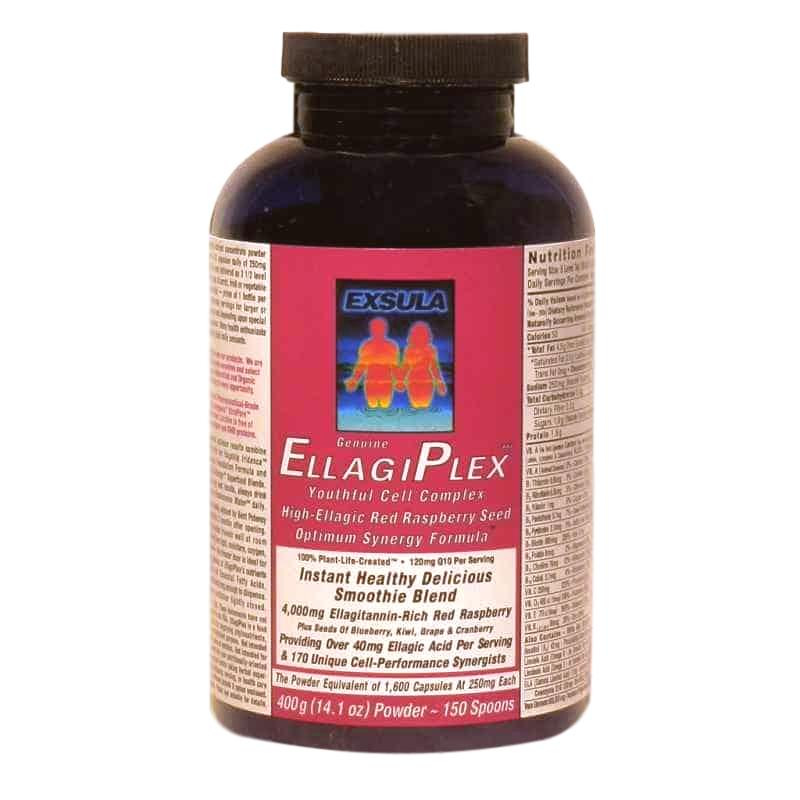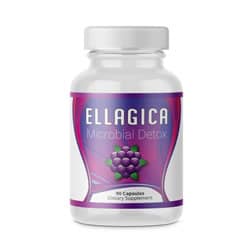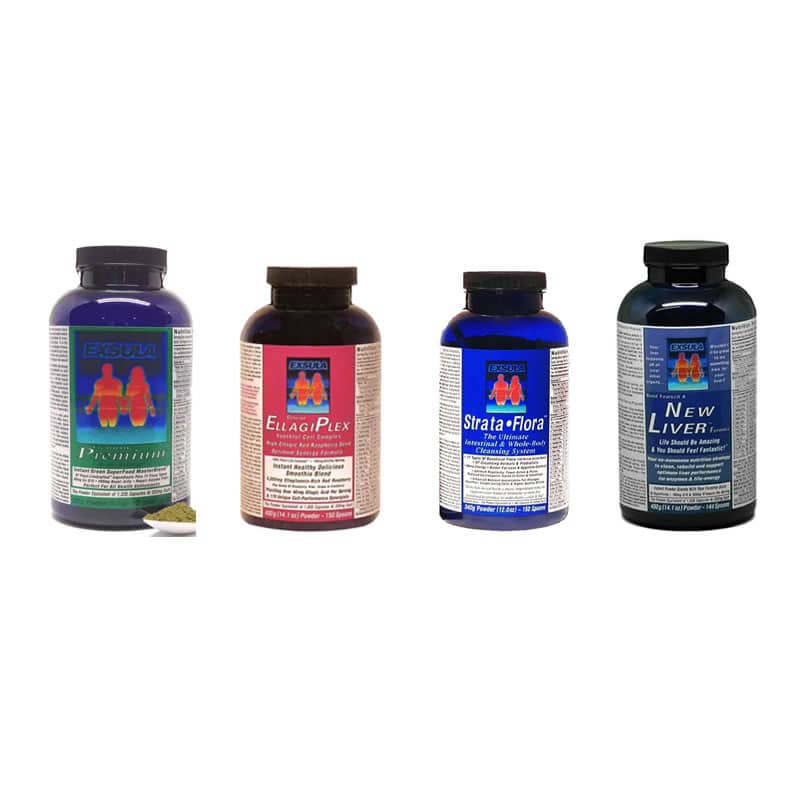No products in the cart.
Ellagitannins Explained
Your body has the ability to dissolve cancerous and precancerous cells within a few days, and replace them with young, healthy cells. WithOUT harsh killer toxic chemicals, scalpels and radiation.
However, you must feed and activate the responsible cellular mechanism, with the exact nutrient, in the potency it requires.
Ellagitannins from ellagic acid do that.
About Free Radicals
Science has proven that free radicals are responsible for mutated cell growth. This causes much ill health, from common symptoms of aging, all the way to terminal cancerous diseases.
The cells in your body are naturally in a continual cycle of birth (replication) and death (apoptosis). Your body controls replication to ensure no mistakes (cancerous mutations) occur prior to cell division. If mutations are detected, the cell is instructed to die or not reproduce, thus protecting you from cancerous growths.
When cells ignore the signals to die (apoptosis), they become virtually immortal, reproducing indefinitely, while abandoning their intended function. They grow as a tumor.
When aided by Ellagitannins, you feed and activate your natural mechanisms that shut-off the bad cells. This enables your body to stop free radical damage. And that helps everything from symptoms of aging to cancer.
Stated another way…
Apoptosis is the scientific term for programmed cell death. It’s natural and is just one of many ways your body protects you from cancer.
As we age, cellular replication mistakes can occur. Cancer cells somehow become immune to the signals that cause cells to self-destruct, so they become virtually immortal and reproduce indefinitely.
Science has proven that free radical reproduction can be slowed or even stopped with Antioxidant supplementation.
Sources of Free Radicals
- Undesirable by-products of your metabolic processes
- Poor or insufficient nutrition (processed foods/meat, alcohol, sugar)
- Environmental pollution.
Most free radicals are extinguished by your own antioxidants. But most of us do not produce enough. To control excessive amounts of free radicals your body needs help. Science has proven that Antioxidant supplements can kill free radicals.
Ellagitannins from Raspberries…
This Antioxidant Can KILL Cancer Cells
By causing apoptosis (normal death) in cancer cells, and inhibiting mutations within cell DNA. When you wake up apoptosis, tumors may disappear.
 Raspberries contain one of the most powerful antioxidants known; a series of Ellagitannins which are converted into ellagic acid in your body. Many fruits contain Ellagitannins, but your body cannot convert all sources into useable, beneficial levels of ellagic acid.
Raspberries contain one of the most powerful antioxidants known; a series of Ellagitannins which are converted into ellagic acid in your body. Many fruits contain Ellagitannins, but your body cannot convert all sources into useable, beneficial levels of ellagic acid.
Raspberries are one of the few sources of Ellagitannins that your body can transform into useful levels of ellagic acid.
Small amounts of Ellagic Acid is found in other foods (such as strawberries, blackberries, walnuts, pecans, pomegranates, and cranberries). Raspberries have been found to have up to six times more.
Ellagitannins from ellagic acid may:
- Stimulate the immune system to destroy cancerous cells
- Be useful in reducing birth defects
- Slow the spread of the HIV virus
- Prevent periodontal disease
- Diabetic retinopathy
- Slow the aging process
- Promote wound healing
- Help prevent heart disease (natural form of aspirin called salicylate)
- Prevent harmful transmutations of cholesterol
- Protect DNA
- Promote cellular detoxification
- Prevent macular degeneration.
A Promising Nutraceutical to Treat Cancer
Ellagic acid is one of the most exciting, promising, nutraceutical compounds to be discovered in the cancer care field in years. It is found throughout members of the berry family, but is particularly concentrated in raspberries, especially of the “Meeker” variety
Switch Off Abnormal and Cancerous Cells Within Days!
Breakthrough for healthy cells and longevity.
- Activate Natural Defective Cell Death Process
- Reverse Damage from Oxygen Deprivation
- Alkalize Your Cellular Terrain
“I wish I knew about this product a year ago, I lost one dog to breast cancer. When my other dog came down with breast cancer, I looked for a natural solution and found you! The tumor was the size of an egg when we got EllagiPlex. It only took one bottle, and the cancer is GONE! There is no tumor left, and our dog is doing great. If you want to talk to me about this, call me at (504) 464-4182.” ~ Robert
Current Research
Please take a look at all the evidence: “Scientific References: Antioxidants”
Although some of the early published research on Ellagic Acid appeared in the 1970’s and 1980’s, we owe most of our current knowledge about Ellagic Acid and it’s use in cancer prevention to studies done at the University of Minnesota School of Nutrition Sciences, and more recently to research conducted by Dr. Daniel Nixon. He’s the President of the American Health Foundation, a professor of Folk Medicine, and a Professor of Hematology and Oncology at the Medical University of South Carolina. He is currently using Ellagic Acid in his cancer research at the Medical University of South Carolina’s Hollings Cancer Institute. In Dr. Nixon’s words…
“It’s fair to say that raspberries contain a chemical that fights cancer cells.”
The American Cancer Society, The Hollings Cancer Institute, and many other health organizations recommend that you eat one cup of fresh raspberries every day. But fresh raspberries are expensive, and difficult to buy when out of season. We have the answer.
 More About Raspberries…
More About Raspberries…
Raspberries are rich in phytonutrients for antioxidant, antimicrobial, antiviral and anti-carcinogenic protection. Chief among these is ellagic acid, the potent cancer fighter.
Raspberries contain manganese, vitamin C, riboflavin, folate, niacin, magnesium, potassium, copper and dietary fiber.
These berries have a long history – back to prehistoric times – but began to be grown widely in the 19th century when many new varieties (including the loganberry and boysenberry) were developed.
Raspberries have a sweet, tangy taste that makes them a popular treat for snacks, desserts, salads, cereals, sauces, baking, jams, jellies and more.
Here’s a great article you might enjoy reading: “15 Healthiest Berries”
- Red raspberries are also known as “cane berries” because they grow on erect stalks or canes
- Provide an excellent source of Vitamin C and manganese
- Very good source of copper and Vitamin B2 (riboflavin).1/2 cup of raspberries contains only 30 calories
- Good source of folate, Vitamin B3 (niacin), biotin, zinc, magnesium, Vitamin B6 (pyridoxine), Vitamin B5 (pantothenic acid), potassium and Vitamin A
History of Raspberries
There are over 200 species of raspberries in the world: all are grouped as red, black, or golden. There are Roman records dating back as far as 4th Century AD which include the description of these berries. Some varieties of raspberries are native to North America, including the wild red raspberry. It is believed that raspberries that were native to overseas countries made their way to North America by being carried by travelers and animals that came across the Bering Sea during ancient times.
The propagation of these plants throughout North America seems to have occurred by similar means. As early food gatherers and hunters traveled far distances, they would often discard what they thought to be an inferior quality food: the smaller sized raspberries. Wild raspberry bushed then began growing along these routes. The first written mention of the cultivation of raspberries is found in an English book on herbal medicine dated 1548. The English cultivated, hybridized and improved the fruit throughout the Middle Ages. In North America, raspberries were considered a luxury well into the mid-1800’s. They began to be grown more widely there in the 19th Century.
Raspberry (Rubus idaeus, Rosaceae)
In plants, Ellagic acid helps:
- Regulate growth and seed germination
- Protects from microbial infections
- Prevents insects from eating them.
Research is pointing to ellagic acid as a potent and natural weapon against cancer in humans.
Habitat: Cultivated in most temperate countries.
Collection: The leaves may be collected throughout the growing season. Dry slowly in a well-ventilated area to ensure proper preservation of properties.
Part Used: Leaves and fruit, seeds.
Constituents:
- Polypeptides
- Flavonoids, mainly glycosides of kaempferol and quercetin.
- Tannins
- Fruit sugar
- Volatile oil
- Pectin
- Citric acid
- Malic acid.







